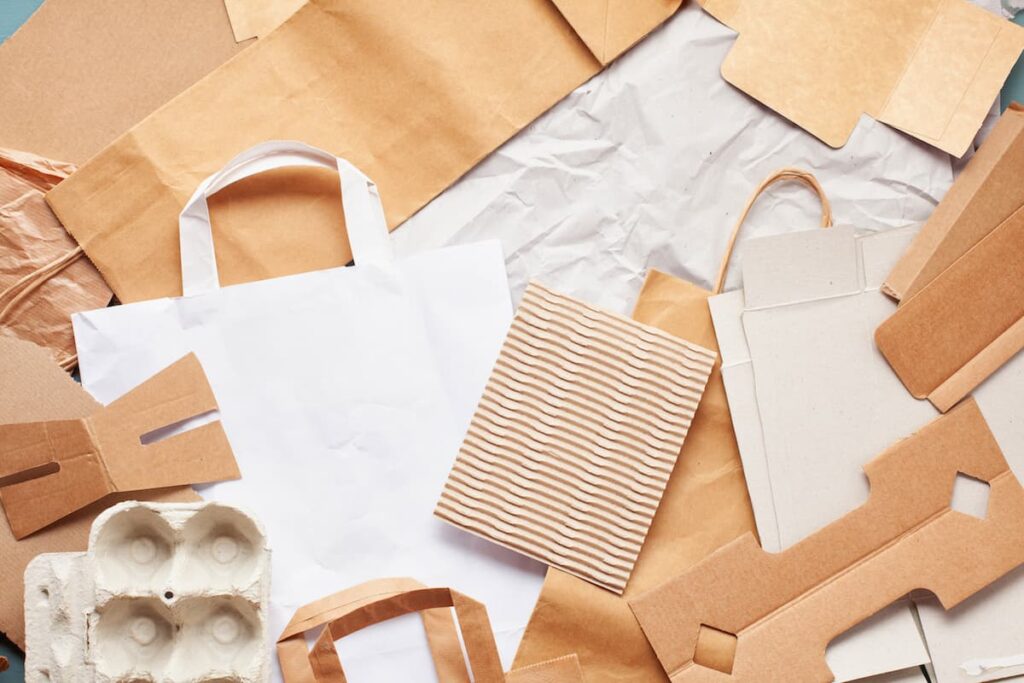
Whether it’s about making a product look attractive or protecting it, the packaging is the main element that can’t be neglected. Apart from this, one gets other perks like sales and marketing. But, companies can’t neglect that 82.2 million tons of municipal solid waste add up to a major portion.
Also, you will be astonished to know that 74% of consumers are willing to pay a higher amount that can make their environment safe. This statistic clearly states how consumers are looking forward to companies choosing sustainable packaging and saying no to plastic pollution.
Not only this, the pandemic that we faced at a global level has pushed the eCommerce industry in such a way that the packaging industry automatically got hype. No matter what the industry or business the goal is the same for all that is to meet the consumers’ demands. So, the above-mentioned statistic is the one that should be taken into consideration. Adaption to paper packaging should be a priority not a choice anymore. As the product packaging is done to make the product look attractive so it’s necessary to come across novel new developments for sustainable packaging i.e. paper packaging.
But, we must understand how paper packaging can be a reliable option to be chosen this year:
• Paper packaging is a flexible and cost-effective way to protect, store and transport various items. It can also be tailored to match the needs of specific customers or products. The characteristics of paper packaging, such as lightweight, biodegradability, and recyclability, making it a crucial component for packaging.
• The market for paper packaging is being driven by rising consumer awareness of sustainable packaging and tight rules enforced by various environmental protection organizations (regarding the usage of environmentally friendly packaging items). The use of cardboard and paper-based bags has increased due to the rapid expansion of online shopping and delivery-on-demand services.
• For packaging companies worldwide, environmentally responsible packaging solutions have become the rule rather than the exception. A paradigm shift in the packaging business has occurred due to significant changes in corporate standards, government policies, trade rules, and consumer preferences. Since July 2016, France has prohibited the usage of plastic bags. According to the French government, approximately 5 billion plastic bags are issued annually, with 12 billion used to bundle fruits and vegetables.
• The inability of paper to package weighty materials is one of the primary issues facing the paper packaging market, which has resulted in the industry being supplanted by the plastics and metal packaging industries. Furthermore, environmental risks arise from deforestation to obtain raw materials and release dioxins during paper production.
• The COVID-19 pandemic wreaked havoc on the packaging sector, with state-wide lockdowns, corporations shifting their sourcing away from China, and materials used in packaging being reconsidered. Although there has been a substantial impact on the supply side of paper packaging, significant growth in end-user demand in specific applications has significantly expanded the scope of paper packaging.
• The global epidemic last year resulted in an increase in food packaging and an increase in demand for corrugated packages in growing e-commerce shipments, two of the critical drivers of the examined market. Packaging for groceries, healthcare supplies, and e-commerce shipments has seen a substantial surge in demand on e-commerce platforms. Demand for industrial, luxury, and some B2B-transport packaging has decreased at the same time.
Global demand for several types of packaging products is expected to stay steady or increase. Production in China, Japan, European countries, and the United States is included. Indeed, one of the paper and pulp industry’s strengths is that the demand for packaging products is continually growing. The rise in online purchasing and e-commerce entrepreneurial projects in recent years has fueled this trend.
Packaging that is light in weight
You may have noticed a shift in the weight of special packaging if you’re a consumer. This is clear to individuals who are paying attention to particular products. It’s because, at the time when insubstantial packing was adopted, a slew of new advantages emerged. This applies to all product packaging tiers, including luxury products. One of the benefits of lightweight packaging is that it can contribute to developing a company by reducing costs. Lightweight packaging reduces CO2 emissions, saves money on pulp, and reduces shipping costs, naming a few benefits.
Packaging for Hygiene Products
Another development in the pulp and paper sector that will continue is the growing popularity of hygiene products and the resulting requirement for packaging. For a few, toilet paper, cloths, tissues, and towels are included. One reason for the increase is because the middle class buys more of these products. This is ascribed to an increase in the middle-class population in some parts of the world, hence increasing the consumption of these products. Pulp and paper manufacturers have taken advantage of this growth in socioeconomic status by developing packaging to meet demand.
Food-related packaging
Food packaging appears to be evolving all the time. There has been a stalk in demand for grease-resistant packaging materials in recent years. This type of product is now employed in several packaged goods as well as eateries. Grease-resistant packing materials are changing to remove fluoro-chemicals and replace them with a natural, chemical-free alternative. To comply with regulations and satisfy present industry demands, manufacturers will continue developing and evolving in this field.
What does the future hold for paper packaging?
To meet expanding demand in these regions, the paper industry devotes itself to paper packaging operations in developing countries.
Paper packaging will almost certainly replace polystyrene in the future. Many major industry firms have moved to or are experimenting with paper-based products. Starbucks, for example, solely utilizes paper cups and is participating in paper recycling projects, including closed-loop systems in some locations. Further advancements in paper recycling, such as recycling coated paper packaging with corrugated paper, will also boost the market. This will considerably lower the cost of recycling, increasing the demand for recycled paper.

